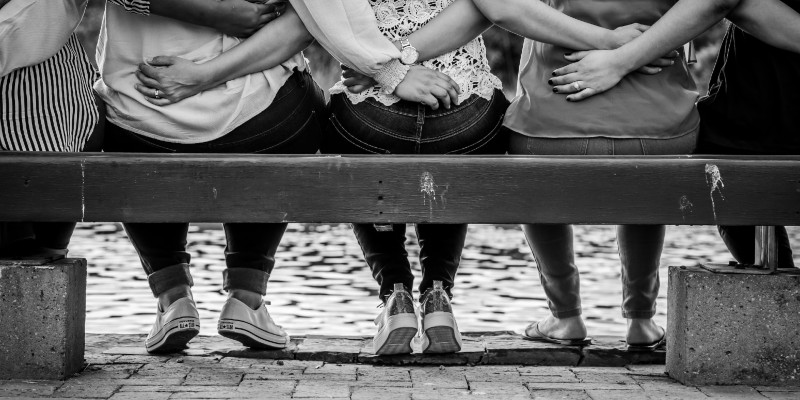Female friendships can be complicated—just like the women in them. My own best friend and I have been through it all. The ups: laughing so hard our sides hurt about jokes from years before; confessing our deepest secrets; crying on each other’s shoulders. The downs: growing apart during university; awkward catch-ups via messages on birthdays that sometimes went unanswered; getting into stupid arguments and simmering about them for far too long. But I know I can call her anytime, and she’ll be there. Crime novels magnify female friendships, taking them in directions that might shock or appall readers—perhaps because the characters are all too familiar. Whether readers have a best friend, dozens of girlfriends, or yearn for a connection with other women, crime novels about female friendship give them something to relate to, however horrifying the plot becomes.
In my book, She Started It, I explore the way female friendship can be inextricably tied to hierarchy, cruelty and isolation in youth, and apathy, despondency and betrayal in adulthood. Poppy Greer is lost when her best friend Tanya joins their school’s group of popular girls: Annabel, Chloe and Esther. She doesn’t see why she can’t join them too, but teenagers can be ruthless. She’s not only purposefully left out, but actively bullied—a topic close to my heart; from my time as a teacher, to being bullied myself. Without female friendships, it’s easy to feel left behind. Ten years later, Poppy arranges a hen party on a private island, but she’s in no mood for celebrating. She’s invited those four for one reason and one reason only: revenge.
The following novels encapsulate many different facets of female friendship, both positive and negative: loyalty, mentorship, laughter; obsession, jealousy, anger; and everything in between.
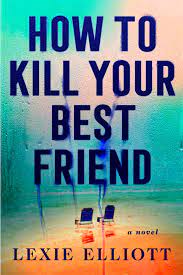
How To Kill Your Best Friend by Lexie Elliott
An apt title, How To Kill Your Best Friend focuses on three female friends—Georgie, Bronwyn and Lissa—and the inevitable dynamic of who the closer pair are that always comes with a trio. When Lissa drowns off the coast near the luxury hotel she owns, Georgie and Bronwyn return to the area for her memorial service. An experienced swimmer, it’s obvious there is more to Lissa’s death than meets the eye. Every three chapters are interspersed with ‘How-To’ methods for killing your best friend: from a simple accident, to poison, to increasingly nefarious deeds, culminating in what really happened. The book exposes the comparisons that are so easily drawn in female friendships: the weighing up of each other’s lives to see who is winning, the regularity of jealousy, but also the dependency on one another and the vicious betrayal that comes with finding out a friend is not who you thought they were.
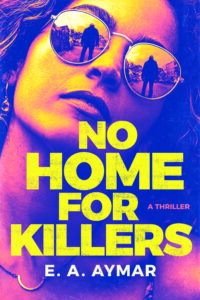
No Home For Killers by E.A. Aymar
For a lot of women, there is no greater example of female friendship than that of sisterhood. Your sister can be both a best friend and worst enemy; unquestioning, but also infuriating. No Home For Killers showcases the strength of sisterhood through Melinda and Emily Peña. Neither has spoken to the other in years, but when their brother is murdered the two come together to find out what really happened. A famous musician and activist, he was not a man without enemies. It doesn’t matter—they will uncover the truth, though not without bringing their own issues into the mix. Melinda is an ex-social worker wracked by guilt. Emily is a masked vigilante who wants to punish abusive men. The way they’ve dealt with their shared pasts couldn’t be more different, but this is a plot guided by their unwavering connection. When the chips are down, Melinda and Emily are ready for anything, because they know they have each other.
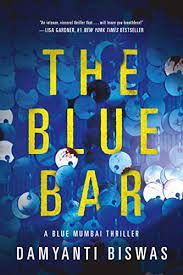
The Blue Bar by Damyanti Biswas
An often under-appreciated aspect of female friendship is that of mentorship and guidance. The Blue Bar, set in a powerfully vivid Mumbai, is a mystery: certain a serial killer is on the loose targeting women, a detective becomes determined to find a missing bar dancer. But at its heart, this novel is about the reliance women have on one another for support in an often cruel and exploitative world. Tara starts bar dancing at only seventeen. Such places can blur the lines between exotic dancing and prostitution, and she relies on her best friend and mentor-figure, Zoya, to help navigate the dangerous confines of a bar dancer’s life. Zoya guides her through not only dance steps and what clothes to wear, but also how to stay safe. When Tara agrees to a client’s assignment she finds odd but harmless, everything Zoya has taught her will be put to the test. And Zoya discovers she will do anything to protect her friend.

One of the Girls by Lucy Clarke
One of the Girls explores the difficulty of time passing. Lexi, the bride at this hen weekend on a tiny Greek island, used to be the party-girl. Her self-appointed maid of honour, Bella, can’t help but be overprotective of their old friendship and the fun they used to have. She’s desperate to get back the Lexi she knew, particularly amidst Lexi’s new friendships with the other women invited. It’s a common issue. Do you try and claw back what you had, or accept the dynamic has changed and make something new of it? With an ending that speaks to the strength of female bonds, every woman on this trip has a devastating secret which will connect them all (for better or worse) forever. It is a brilliant example of the lies and hierarchies that encompass complicated female friendships.

The Collective by Alison Gaylin
When is a female friend needed more than after a tragic event? The Collective is an excellent portrayal of how grief can isolate and swallow you whole. In the wake of her daughter’s murder, Camille Gardner has been consumed by nothing but the thought of revenge. She finds a group of women whose children were also killed, women who are equally out for vengeance. Men are strictly not allowed. This is a coming together of female pain, female frustration, and female rage. At first, Camille feels understood like never before. But as she entangles herself further and further into this secretive group, it becomes clear that getting out will be impossible without serious consequences. This is a story about being a mother, but it’s also a story about the intense bond between women who’ve experienced a shared tragedy—a bond that may be taken advantage of.
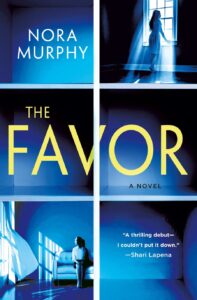
The Favour by Nora Murphy
Sometimes a stranger can be the exact friend you need. Leah and McKenna don’t know each other, but when Leah chances upon McKenna in a liquor store, she recognises herself in her. Without hesitation, she follows McKenna home—and discovers they are as similar as she thought for the worst reason of all. Even though they have never exchanged a word, Leah does something for McKenna—the titular “Favour”—that will change their lives forever. The Favour is a powerful portrayal of the unfortunately all too common female experience of domestic abuse. Leah instinctually recognises a fellow victim, and the two connect through their shared trauma, creating a poignant example of female friendship against all odds.

My Sweet Girl by Amanda Jayatissa
Female friendships can breed competition and rivalry to such an extent the relationship is fractured forever. In Jayatissa’s My Sweet Girl, Paloma has spent eighteen years in the United States, adopted by a wealthy American family from a Sri Lankan orphanage. She and Lihini were best friends there, united against the cruel treatment of those in charge, fearsomely close, but also fearsomely competitive at the news of a potential way out. When Paloma was the one adopted, they went their separate ways. America was meant to be the perfect life—but Paloma is cut off from her parents, struggles with drinking, and now her roommate has discovered a secret from her past she’s determined to keep quiet. Things go from bad to worse when she finds him dead, and after a drunken blackout she calls the police only for the body to have vanished by the time they arrive. Paloma’s mind spirals: does what happened here in the present have something to do with the past she’s been trying desperately to hide, and the best friend she left behind?
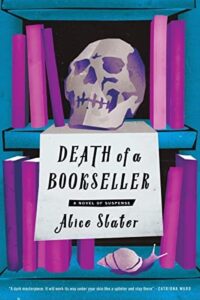
Death of a Book Seller by Alice Slater
Death of a Book Seller is female friendship turned obsession. Roach is a London book seller, fascinated with true crime and disdainful of most people, nicknaming them “normies”. Laura, who joins the bookshop in a bid to help it from failing, should be everything Roach hates. She’s cheerful, happy to help, wears cute clothes and takes her job seriously. But after a poetry reading where Laura hints at some kind of dark past, Roach thinks they’re going to be the best of friends. She’s determined to find out what Laura is hiding, and in doing so bring them closer together. It doesn’t matter that the more she tries, the more boundaries are crossed, the more Laura is repulsed, eager to get away. Here’s an uncomfortable truth: not everyone wants to be your friend, however great you might think they are. But loneliness and the need to connect are a dangerous combination in this novel, and Roach will never accept that Laura would rather be in the company of literally anyone else.

Dangerous Girls by Abigail Haas
Teenage relationships feature prominently in my own novel, so it felt appropriate to include a YA novel that deals with similar themes. Dangerous Girls is set in Aruba, during that glorious summer when school is over for good but real life hasn’t started yet. Anna and Elsie are the best of friends after Elsie rescued Anna from the school bully, and this trip with their other friends to celebrate the end of exams is the culmination of their years together. The novel demonstrates the claustrophobia of teen friendships perfectly—the intensity and dependency that manifest from them, particularly when things are bad at home, which is the case for our protagonist, Anna. Everything is immediate and important, and it feels like the friendship will last forever. But when Elsie is brutally murdered on the trip, and Anna is the one accused of the crime, the true secrets and trials of their friendship are exposed for the world to see.
***

